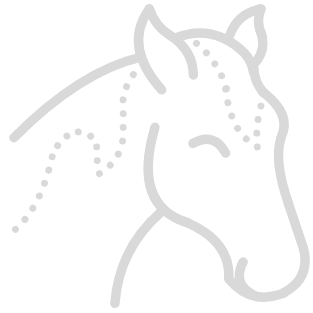welcome
you’ve come to the right place if
you are interested in a shock-absorbing saddle pad for horses made of durable felt, lambskin and memory foam, which relieves the back and can also compensate for atrophies
you are interested in how you can establish healthy movement patterns and serenity in your horse
you have questions running through your mind, like..
- How can I improve if my horse is heavy on the forehand and how can I train his hindquarters?
- What exercises can I do if my horse hollows its back?
- What can I do to foster the lifting of the trunk and get my horse out of carrying fatigue?
- Which exercises will help my horse with stifle problems, loose ligaments or weak stifle?
- What can I do to counteract pace tendency and training-related gait irregularities?
- What can I do if my horse is stiff or difficult to sit at the trot?
- Which riding aids and exercises will help my horse with his canter problems?
- How can I straighten my horse’s crookedness, balance it and collect it mainly with seat aids?
- How can I build up my horse’ s back muscles?
- Which gymnastic exercises can help with the symptoms of a navicular syndrome?
- What can I do if my horse drags its toes when walking or trotting?
- Which movement patterns are gentle on tendons and joints?
- What could be the reason for a horse’s hind leg frequently kinking?
- What could be the cause of my horse stumbling frequently?
- How can I build up my horse’s topline and reduce his underneck?
- Which exercises help with muscle shortening after lameness?
- What can help my horse with recurring SI joint problems or filled legs?
- Which exercises help against unstable joints or twisting hocks?
- What can I do if my horse walks with his head outwards when lunging, drifts outwards or always falls inwards with his shoulder?
- How can I help my horse if it is hypermobile or wobbly?
- How can I help my horse (also gaited horses, Icelandic horses, Andalusian or PRE) if it goes behind the vertical or no longer wants to go forward at all?
- What options do I have if my horse is unmotivated in the arena or just wants to run hastily?
- How can I check if my saddle fits my horse?
- Which exercises can I use to calm my horse that is easily scared or traumatized by bad experiences?
Equisensomotoric® Training is a training method that specializes in these questions and related topics.
Equisensomotoric® Training
- is a horse training program that focuses on the development of healthy movement patterns, muscle development and training of the core and trunk lifting muscles
- provides a special selection of exercises that build up your horse’s carrying capacity, keep it as healthy as possible, straighten it and prevent carrying fatigue
- works on the relief of the forehand, the training of the hindquarters, the stabilization of his joints and with positive reinforcement
- includes riding, work in hand and correct lunging as well as working with the rotation theory of the horse’s spine
- makes it easy to understand the connections between crookedness, back activity, collection as well as walk, trot, canter and gait
- also works with bitless bridles, the old Californian bosal or with bits as well as different types of saddles (spanish, baroque, dressage, western, treeless…)
- is aimed at 7 defined health goals: straightness, joint stability, carrying capacity, healthy gaits, balance, suppleness in the body and serenity in the mind
- aims to create a stable muscle foundation for further requirements such as riding, cattle work, working equitation, driving, etc.
- is tried and tested and has already helped many horses and riders
- can be learned online, no matter where you live




